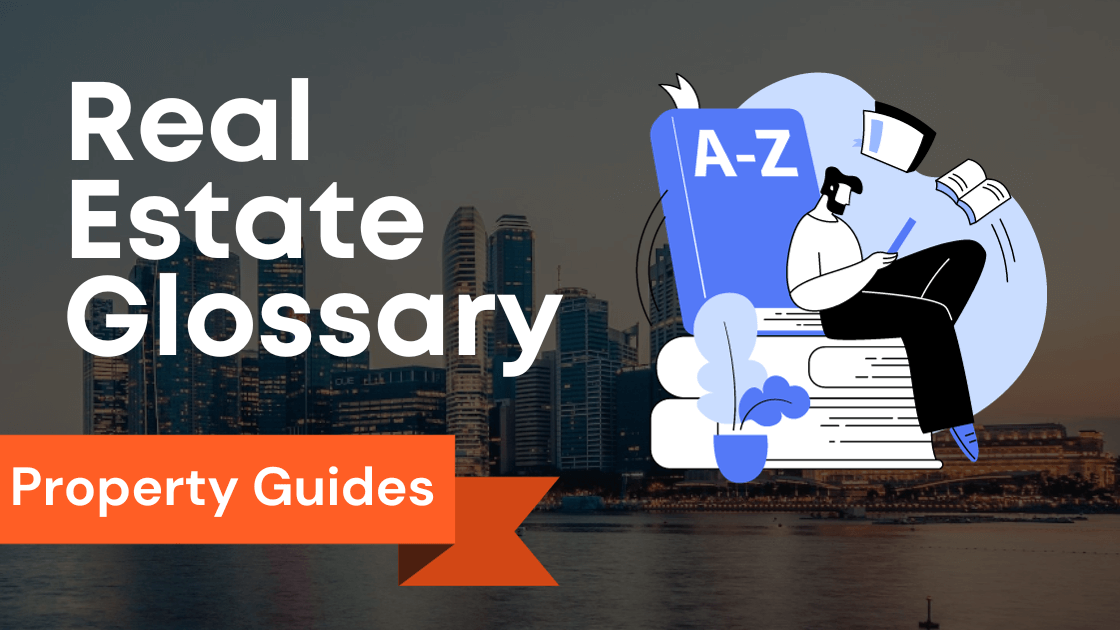
Ready to unlock the exciting potential of your CPF savings?
In this guide, we’ll explore the Voluntary Housing Refund.
Discover how it works, its benefits, and its eligibility criteria.
Learn the simple steps to make a voluntary refund and optimize your financial future.
Let’s embark on this journey toward a brighter and more secure tomorrow!
Key Takeaways
| Key Takeaway | Explanation |
|---|---|
| CPF Housing Refund | Homeowners can refund the CPF monies used for their housing loan to ensure sufficient retirement savings. The refund includes the principal amount and accrued interest. |
| Voluntary CPF Housing Refund | Homeowners can voluntarily refund a portion or the entire amount of CPF monies used for housing. This can be done at any time during the loan tenure or upon selling the property. A voluntary refund reduces the interest owed and helps accumulate more CPF savings. |
| Eligibility for Voluntary CPF Refund | To be eligible, homeowners must have sufficient CPF Ordinary Account (OA) savings to cover the refund amount. Making a voluntary refund is not mandatory but is highly recommended for adequate retirement savings. |
| How to Make a Voluntary Housing Refund | Homeowners need to fill out necessary forms from the CPF Board, available on their website or at CPF Service Centres. Once completed, the forms are submitted in person or via mail. Refund process may take time, so early submission is advisable. |
| Requirements for Voluntary CPF Refund | Eligibility requires the completion of property sale or full housing loan repayment and sufficient CPF OA funds to refund the principal amount plus accrued interest. Refunds can only be made from the CPF OA, not the Special Account (SA) or Full Retirement Sum (FRS). |
| Benefits of Voluntary CPF Refund | Benefits include freeing up CPF funds for other purposes, reducing interest accrual, and potential higher returns through other investments. |
| Understanding CPF OA and Its Role | CPF Ordinary Account (OA) is used to fund housing, insurance, investment, and education expenses. Funds in CPF OA earn an interest rate of 2.5% per annum. It plays a crucial role in housing refunds as it is the account from which refunds are made. |
| CPF OA Withdrawal Limits for Housing | CPF OA withdrawal limits are set as the Full Retirement Sum (FRS) and Basic Retirement Sum (BRS) that individuals must have before withdrawing additional amounts for housing. |
| Accrued Interest in CPF Housing Refunds | Accrued interest is the interest earned on unused CPF funds used for housing. It is crucial to consider accrued interest when planning for a refund. Calculation is based on the CPF OA interest rate, compounded annually. |
| Utilizing CPF Savings for Housing | CPF savings can be used for downpayment and housing loan purposes, helping to reduce the amount borrowed and overall interest paid on the loan. Housing grants can be used in conjunction with CPF savings to further reduce the financial burden. |
| Repayment Process for CPF Housing Refunds | The repayment process involves filling out forms and submitting them to the CPF Board. The refund is credited back to the CPF account, and the amount is deducted from the CPF OA. The repayment is made to the CPF account, not in cash. |
| Voluntary vs. Mandatory CPF Housing Refund | Voluntary refunds are chosen by the homeowners, while mandatory refunds are triggered by events like selling the property or turning 55. A voluntary refund allows more control over the refund process. |
| CPF Interest Rates and Their Influence | CPF interest rates are calculated based on the weighted average interest rates of the four CPF accounts. Higher interest rates mean a higher refund amount when making a housing refund. |
| Key Factors to Consider Before Refunding | Consider the benefits of a refund, the risks involved, and the implications of not refunding CPF monies used for housing. Evaluate your financial situation and cash flow before proceeding with a voluntary refund. |
| How Voluntary Housing Refunds Impact Retirement | A voluntary refund can positively impact retirement savings, allowing the refunded funds to earn interest and potentially increase retirement savings. It can help achieve financial goals and optimize CPF savings. |
| How Housing Loans Affect CPF Refunds | Taking a housing loan affects CPF refunds, as you need to refund the money used for the loan, including accrued interest, upon selling the property or reaching 55 years old. Refinancing does not exempt you from CPF refunds. |
| Maximizing CPF for Housing | Understanding the 2.5% accrued interest on CPF monies used for housing and using strategic approaches can optimize CPF usage for housing. Using CPF to pay off the housing loan can save on interest payments. |
| Selling Property: Handling CPF Refunds | Steps to handle CPF housing refunds upon selling the property, considering the refund for housing loans, and handling CPF monies used in property transactions. |
| CPF Housing Grants: Enhancing Refunds | CPF housing grants can contribute to housing refunds and further reduce the financial burden of purchasing a property. Maximizing CPF grants for the downpayment can be advantageous. Repaying CPF grants when selling the property is necessary. |
| Planning for Retirement with CPF | Utilizing CPF for housing and retirement planning, including transferring CPF OA savings to SA or RA for higher interest rates. Considerations when using CPF monies for housing. |
Understanding the Voluntary Housing Refund: A Comprehensive Guide
Explanation of the CPF Housing Refund
The CPF Housing Refund is a process through which homeowners can choose to refund the CPF monies used for their housing loan.
This is done to ensure that CPF members can accumulate sufficient retirement savings.
By repaying the CPF monies, you are essentially paying back the amount you’ve used and the interest accrued over the years.
How Does the Voluntary CPF Housing Refund Work?
The voluntary CPF Housing Refund allows homeowners to refund a portion or the entire CPF monies used for their housing.
This can be done at any time during the loan tenure or upon the sale of the property.
By making a voluntary refund, you will reduce the interest owed to your CPF account, allowing you to accumulate more CPF savings over time.
Can I make a Voluntary CPF Housing Refund?
You can make a voluntary CPF Housing Refund if you meet the eligibility criteria.
To be eligible, you must have sufficient CPF Ordinary Account (OA) savings to cover the refund you wish to make.
It is important to note that making a voluntary refund is not mandatory, but ensuring you have enough retirement savings in your CPF account is highly recommended.
How to Make a Voluntary Housing Refund from Your CPF Account

Steps to initiate a voluntary housing refund
You must follow specific steps when you refund your CPF monies used for housing.
Firstly, you must fill out the necessary forms the CPF Board provides.
These forms can be obtained from their website or any CPF Service Centre.
Once you have completed the forms, you must submit them to the CPF Board in person or via mail.
It is important to note that the refund process may take some time, so it is advisable to submit the forms well in advance.
Requirements for making a voluntary CPF housing refund
To be eligible for a voluntary housing refund, there are a few requirements that you need to fulfill.
Firstly, you must have completed the property sale or have fully repaid your housing loan.
Additionally, you should have sufficient funds in your CPF account to refund the principal amount plus any accrued interest.
It is also worth noting that you are only allowed to make a voluntary housing refund from your CPF Ordinary Account (OA) and not from your Special Account (SA) or Full Retirement Sum (FRS).
Benefits of making a voluntary CPF housing refund
Making a voluntary CPF housing refund can have several benefits for individuals.
Firstly, it allows you to free up your CPF funds for other purposes, such as investments or education-related expenses.
Refunding your CPF monies also helps reduce the amount of interest that accrues over time, lowering your overall repayment amount.
Furthermore, by refunding your CPF monies, you can earn a higher return on your savings through other investment opportunities.
Explaining CPF OA (Ordinary Account) and Its Role in Housing Refunds
What is CPF OA, and how does it work?
The CPF OA, also known as the Ordinary Account, is one of the three accounts under the CPF system in Singapore.
The OA primarily funds housing, insurance, investment, and education expenses.
It is supported by a portion of your monthly salary and contributions from your employer.
The funds in your CPF OA earn an interest rate of 2.5% per annum, which is higher than the interest rates of other CPF accounts.
Understanding the role of CPF OA in housing refunds
CPF OA plays a crucial role in housing refunds as it is the account from which the voluntary refund is made.
When you make a voluntary housing refund, the funds are deducted from your CPF OA, reducing the balance in that account.
Refunding your CPF monies from the OA helps to ensure that you can meet the refund requirements and also helps minimize the impact on your other CPF accounts.
Withdrawal limits and restrictions on CPF OA for housing
There are certain withdrawal limits and restrictions on CPF OA for housing purposes.
These limits ensure that individuals have sufficient funds in their CPF OA to meet their housing needs in the long term.
The CPF Board sets the Full Retirement Sum (FRS) and the Basic Retirement Sum (BRS) as the minimum amounts individuals must have in their CPF OA before withdrawing additional charges for housing purposes.
These limits are periodically reviewed and adjusted to account for inflation and changes in the cost of living.
Accrued Interest and Housing Refunds: What You Need to Know

Understanding accrued interest in CPF housing refunds
Accrued interest is essential to consider when making a CPF housing refund.
When you use your CPF funds for housing, the unused portion earns an interest rate.
This interest is known as accrued interest.
When you choose to refund your CPF monies, the refund includes the principal amount and the accumulated interest.
It is essential to consider the accrued interest to understand the total amount that needs to be refunded.
Calculation method for accrued interest
The calculation of accrued interest for CPF housing refunds is based on the CPF OA interest rate.
The interest is calculated every month and compounded annually.
The exact calculation method may vary depending on the specific CPF policies at the refund time.
It is advisable to consult with the CPF Board or refer to their website for the most accurate and up-to-date information regarding the calculation of accrued interest.
Implications of accrued interest on housing refunds
The accrued interest on housing refunds can have implications on the total amount that needs to be refunded.
As the interest accrues over time, the refund amount may be higher than the original principal amount used for housing.
Remembering this when planning for a voluntary housing refund and budgeting for the repayment amount is essential.
Understanding the implications of accrued interest can help you make informed decisions regarding your CPF monies and housing refunds.
Utilizing CPF Savings for Housing: Benefits and Considerations
Using CPF savings for downpayment and housing loan
CPF savings can be used for downpayment and housing loan purposes.
Utilizing your CPF savings for a downpayment can help reduce the amount you need to borrow from a financial institution, lowering your monthly mortgage payments.
Using CPF savings for a housing loan can also help to reduce the overall interest paid on the loan, as the CPF OA interest rate is lower than most mortgage interest rates offered by banks.
Exploring housing grants and CPF savings
In addition to using CPF savings for downpayment and housing loans, individuals may also be eligible for housing grants.
Housing grants are financial incentives the government provides to assist individuals in purchasing their first homes or upgrading their existing ones.
These grants can be used with CPF savings to reduce further the financial burden of buying a property.
Understanding the repayment process for CPF housing refunds
The repayment process for CPF housing refunds is relatively straightforward.
Once you have completed the necessary forms and submitted them to the CPF Board, they will assess your eligibility and calculate the refund based on the principal amount and accrued interest.
The refund will be credited back to your CPF account, and the amount will be deducted from your CPF OA.
It is important to note that the repayment is made to your CPF account and not in cash.
Step-by-Step Process of Refunding Your CPF for Housing

We need to refund your CPF voluntary housing.
If you have used CPF monies for housing loans, you must refund them when certain conditions are met.
These conditions include reaching the age of 55 or selling your property.
Repaying your CPF is essential as it helps ensure sufficient CPF savings for retirement.
Understanding the CPF monies used in housing loans
When you take a housing loan, CPF monies can be used to pay downpayment, monthly installments, and other related costs.
The amount of CPF used for housing is subject to the government’s limits and restrictions.
It is essential to understand how CPF monies are utilized in housing loans.
Making a voluntary CPF housing refund
If you wish to refund your CPF voluntarily, there are specific steps you need to follow.
You can make the refund through the CPF website or by visiting a CPF service center.
It is important to note that the refund includes both the principal amount and the accrued interest.
CPF Housing Grants: Enhancing Your Housing Refund
How CPF grants can contribute to your housing refund
Certain individuals may be eligible for CPF housing grants, which can further enhance their housing refund.
These grants provide financial assistance and can be used for downpayment, loan repayment, or other housing-related expenses.
Understanding how CPF grants work can significantly benefit homeowners.
Maximizing the CPF grants for a downpayment
Using CPF grants for the downpayment can be advantageous when buying a property.
By maximizing the CPF grants available, homeowners can reduce out-of-pocket expenses and better manage their cash flow.
Exploring the different types of CPF housing grants and their eligibility criteria is crucial in optimizing the housing refund.
Paying back CPF grants when selling your property
If you have received CPF grants and decide to sell your property, it is essential to be aware of the obligations regarding the repayment of these grants.
The amount to be refunded depends on various factors, such as the duration of ownership and the property’s sale price.
Understanding the repayment process is essential to avoid any legal or financial complications.
Planning for Retirement: Using CPF for Housing and Beyond

Exploring the options of using CPF for housing
CPF can be a valuable tool for retirement planning, and understanding the different options for using CPF for housing is essential.
Whether it is through the CPF Ordinary Account (OA), Special Account (SA), or Retirement Account (RA), homeowners can strategically utilize their CPF monies to ensure a comfortable retirement.
Beyond housing: Utilizing CPF for retirement planning
While CPF is commonly associated with housing, it serves a broader purpose in retirement planning.
Homeowners can transfer their CPF OA savings to their SA or RA to earn higher interest rates and boost their retirement savings.
It is essential to carefully evaluate the pros and cons of CPF utilization for retirement planning.
Considerations when using CPF monies for housing
Homeowners must consider various factors before deciding to use CPF monies for housing.
These include the CPF interest rate, loan interest rates, the impact on cash savings, and the overall long-term financial plan.
Being well-informed about the implications of using CPF for housing is crucial for making sound financial decisions.
Selling Your Property: How to Handle CPF Housing Refunds
Steps to take to refund CPF when you sell your property
When selling your property, handling the CPF housing refund efficiently is necessary.
Homeowners must follow specific steps, such as applying for the CPF refund and ensuring it is credited correctly.
Please properly handle the CPF refund to avoid delays or complications during the property sale process.
Taking into account the CPF refund for housing loans
The CPF refund for housing loans must be considered when you sell your property.
This refund is essential for homeowners to close their housing loan accounts and receive the necessary funds.
Awareness of the refund amount and the subsequent financial implications is crucial for effective financial planning.
Important factors to know about selling property with CPF usage
When your property has been financed with CPF monies, there are important factors to be aware of during the selling process.
This includes the requirement to refund the CPF, cash proceeds handling, and other legal responsibilities.
Understanding these factors will ensure a smooth and hassle-free property sale.
Maximizing Your CPF: Exploring Various Ways to Use It for Housing

Understanding the 2.5% accrued interest on CPF monies used for housing
CPF monies used for housing accrue an interest rate of 2.5%.
This interest helps to grow your CPF savings over time.
Understanding this interest rate and how it can impact your overall housing refund is essential.
By utilizing CPF intelligently, homeowners can maximize this accumulated interest.
Strategic approaches to optimize CPF usage for housing
To optimize CPF usage for housing, homeowners can adopt strategic approaches.
This includes considering a downpayment, loan repayment, and a long-term financial plan.
By carefully planning the allocation of CPF monies, homeowners can achieve a balanced and effective housing refund strategy.
Ways to utilize CPF to pay off the housing loan
Utilizing CPF to pay off the housing loan is common among homeowners.
Using CPF OA funds, homeowners can reduce their outstanding loan amount and save on loan interest.
Understanding the various options and implications of using CPF to pay off the housing loan is crucial in making informed financial decisions.
The Impact of Housing Loans on CPF Refunds
How does taking a housing loan affect CPF refunds?
When you take a housing loan, you are borrowing money to pay for your property, and this loan is typically serviced with your CPF funds.
However, if you sell your home before turning 55, you must refund the money you’ve used from your CPF to service your mortgage.
The money you must repay depends on the principal amount withdrawn from your CPF and the accrued interest.
What happens if I refinance my housing loan?
If you refinance your housing loan, the situation becomes slightly different.
Refinancing involves taking a new loan to pay off your existing home loan.
In this case, you must refund the CPF monies used to service the original loan and the accrued interest updates to reflect the new loan terms.
It’s important to note that refinancing does not exempt you from CPF refunds.
Can I still get a CPF refund if I have an outstanding housing loan?
Yes, even with an outstanding housing loan, you can still get a CPF refund.
However, the refund you receive will first offset the due loan balance.
If there is any remaining amount after the loan is fully compensated, it will be refunded to your CPF account.
Voluntary CPF Housing Refund vs. Mandatory Refunds: Understanding the Differences

What is the difference between a voluntary and mandatory CPF housing refund?
A voluntary CPF housing refund is when you proactively refund the CPF monies used for housing.
On the other hand, a mandatory refund is triggered by specific events, such as selling your property or turning 55 years old.
While both rebates return money to your CPF account, a voluntary refund allows you more control over the refund process.
When do I need to make a voluntary CPF housing refund?
You may make a voluntary CPF housing refund if you have cash on hand and wish to reduce the outstanding balance on your housing loan.
It can also be beneficial if you want to see the total amount of money you would have earned through CPF interest if the funds were not withdrawn for housing purposes.
What are the eligibility criteria for a voluntary CPF housing refund?
To be eligible for a voluntary CPF housing refund, you must be younger than 55 and have sufficient cash or CPF savings to refund the money used for housing.
Depending on your financial situation and goals, you can choose to refund any amount, either a partial refund or the entire sum.
CPF Interest Rates and Their Influence on Housing Refunds
How are CPF interest rates calculated?
CPF interest rates are calculated based on the weighted average interest rates of the four CPF accounts: Ordinary Account (OA), Special Account (SA), Medisave Account (MA), and Retirement Account (RA).
The interest rates are reviewed quarterly and are subject to adjustments by the CPF Board.
How do CPF interest rates affect housing refunds?
CPF interest rates have a direct impact on housing refunds.
When you refund the CPF monies used for housing, you must also repay the interest earned on those funds.
The amount of interest refunded will depend on the CPF interest rates during the period the funds were withdrawn.
Higher interest rates mean a higher refund amount.
Can I earn interest on my CPF monies used for housing refunds?
No, once you refund the CPF monies used for housing, the refunded amount will not earn further interest.
However, the refund will be added back to your CPF account balance, allowing you to earn interest on your CPF savings before you reach 55 years old.
Key Factors to Consider Before Making a Voluntary CPF Housing Refund

What are the benefits of making a voluntary CPF housing refund?
There are several benefits to making a voluntary CPF housing refund:
- It reduces your outstanding housing loan balance, potentially leading to lower monthly mortgage payments.
- Refunding the CPF monies allows those funds to earn interest in your CPF accounts, helping you grow your retirement savings.
- It provides a clearer picture of your CPF savings and the overall financial health of your housing investment.
Are there any risks in making a voluntary CPF housing refund?
While there are benefits to making a voluntary CPF housing refund, it’s essential to consider the risks involved.
By refunding CPF monies used for housing, you might face shortfalls in cash, especially if you need more money to cover the refund amount.
Evaluating your financial situation and ensuring you have money to spare before proceeding with a voluntary refund is crucial.
What are the implications of not refunding CPF monies used for housing?
If you choose not to refund the CPF monies used for housing, the refunded amount will be deducted from your eventual CPF payouts upon reaching 55 years old.
Your retirement income may be reduced, as the refunded amount and corresponding interest will no longer be available to support your retirement expenses.
How Voluntary Housing Refunds Can Shape Your Financial Plans and Retirement
How does a voluntary housing refund impact my retirement savings?
A voluntary housing refund can positively impact your retirement savings.
By refunding the CPF monies used for housing, those funds can earn interest in your CPF accounts, potentially increasing your retirement savings.
Additionally, reducing your outstanding housing loan balance through a refund can free up cash flow, allowing you to allocate more funds toward your retirement goals.
Can a voluntary housing refund help me achieve my financial goals?
Yes, a voluntary housing refund can help you achieve your financial goals.
It allows you to reassess your financial situation, reduce debt, and save on interest payments.
The refunded funds can be redirected towards other investments, savings, or achieving specific financial milestones, such as starting a business or funding your children’s education.
Should I make a voluntary housing refund if I have cash on hand?
If you have cash on hand and wish to optimize your CPF savings, making a voluntary housing refund can be a good decision.
By refunding the CPF monies used for housing, you can unlock the potential of those funds, allowing them to earn interest and grow your CPF savings.
However, it’s essential to carefully evaluate your financial goals and priorities before deciding.
Conclusion
In conclusion, understanding the Voluntary CPF Housing Refund is essential for Singaporean homeowners who have used CPF monies for their housing loans.
Individuals can benefit in various ways by choosing to refund the CPF monies, including accumulating more retirement savings for the future.
Making a voluntary refund involves completing the necessary forms and meeting eligibility criteria.
It is crucial to consider the implications of accrued interest on the refund amount and the impact of taking a housing loan on CPF refunds.
Homeowners should use CPF funds wisely, considering factors such as downpayment, loan repayment, and long-term financial planning.
Frequently Asked Questions
What is a voluntary housing refund?
A voluntary housing refund, also known as a CPF voluntary housing refund, is a process where you refund the money you’ve used from your CPF (Central Provident Fund) for housing purposes.
How is CPF used for housing?
CPF can be used to pay for the property and service your mortgage.
It allows you to use your CPF contributions to finance your housing needs.
Why do I need to make a CPF voluntary refund?
If you have used CPF monies for housing, you must refund the amount used.
This ensures that you return the funds meant for your retirement savings.
How do I refund cash through the CPF voluntary housing refund?
You can make a voluntary CPF refund using the CPF monies in your Ordinary Account.
This amount will be deducted from your CPF balance and returned to your account.
Is a CPF voluntary housing refund a good idea?
Refunding the CPF used for housing purposes is a good idea.
Doing so can ensure that your CPF funds are preserved for your retirement and other essential needs.
Can I get extra cash through the CPF voluntary housing refund?
The CPF voluntary housing refund allows you to receive extra cash by returning the CPF monies used for housing purposes.
Can I refund the CPF used for any part of the housing?
Yes, you can refund the CPF used for any part of your housing, such as downpayment, mortgage payment, or other related expenses.
How can I use the CPF voluntary housing refund to service my mortgage?
Refunding the CPF used for housing can be a way to service your mortgage.
It helps you reduce the outstanding amount owed on your mortgage, improving your financial stability.
What are the reasons to make a voluntary housing refund?
There are several reasons to make a voluntary housing refund, such as paying back CPF monies, reducing high-interest debt, improving cash flow, or using the funds for other investment opportunities.
What is the maximum and minimum limit for a CPF voluntary housing refund?
The maximum limit for the CPF voluntary housing refund is based on the CPF amount used for housing, while the minimum limit is subject to the refund rules set by CPF Board.




















